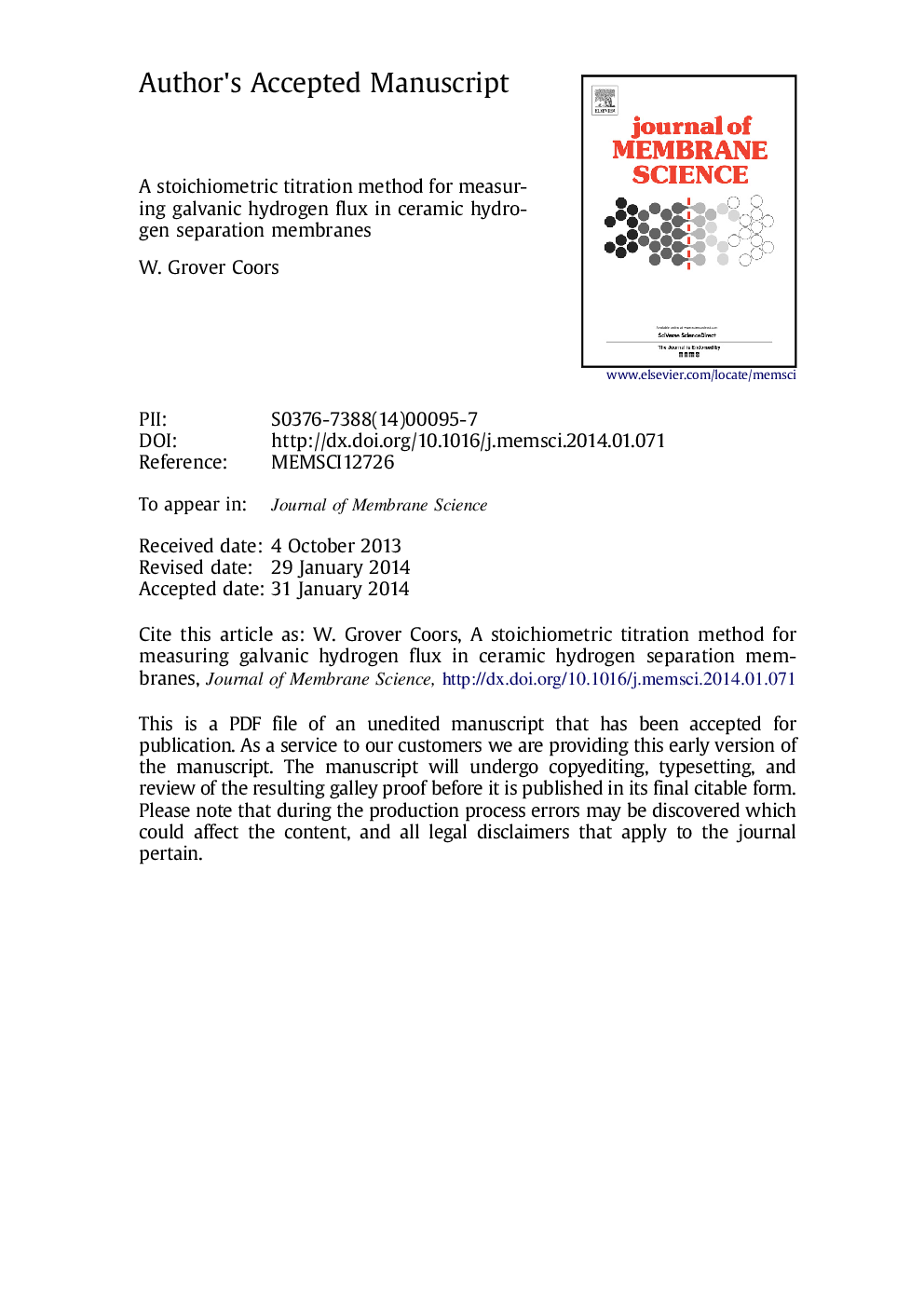| Article ID | Journal | Published Year | Pages | File Type |
|---|---|---|---|---|
| 7022303 | Journal of Membrane Science | 2014 | 24 Pages |
Abstract
A method is described for quantitative measurement of the hydrogen flux through protonic ceramic hydrogen separation membranes under practical operating conditions. The method uses a simple stoichiometric titration technique to determine the quantity of oxygen required in the membrane permeate stream to reach the lambda transition point, as determined by a down-stream zirconia oxygen sensor. As such, the method does not require the use of gas chromatographs or mass spectrometers, which are difficult to calibrate for hydrogen under high pH2O conditions. The theory of operation and application to yttrium-doped barium cerate/zirconate, BCZY, membranes is laid out in detail in consideration of the unique transport properties of these perovskite proton conductors under galvanic operation in asymmetric atmosphere conditions. The Faradaic efficiency toward hydrogen in these membranes was found to be 95% at 700 °C, and the H2 flux was 1.4 sccm/cm2 (0.95 μmol/s cm2) when pumped galvanically at 8 V.
Keywords
Related Topics
Physical Sciences and Engineering
Chemical Engineering
Filtration and Separation
Authors
W. Grover Coors,
